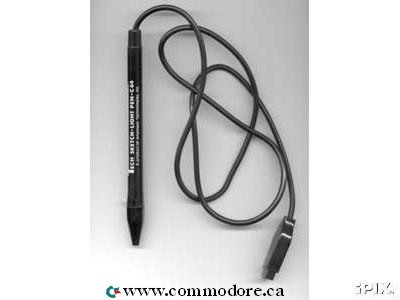
A light pen is a computer input device in the form of a light-sensitive wand used in conjunction with a the computer's CRT TV set or monitor. It allows the user to point to displayed objects, or draw on the screen, in a similar way to a touch screen but with greater positional accuracy. A light pen can work with any CRT-based display, but not with LCD screens, projectors and other display devices.
A light pen is fairly simple to implement. The light pen works by sensing the sudden small change in brightness of a point on the screen when the electron gun refreshes that spot. By noting exactly where the scanning has reached at that moment, the X,Y position of the pen can be resolved. This is usually achieved by the light pen causing an interrupt, at which point the scan position can be read from a special register, or computed from a counter or timer. The pen position is updated on every refresh of the screen.
The light pen became moderately popular during the early 1980s. It was notable for its use in the Fairlight CMI, and the BBC Micro. Even some consumer products were given light pens, in particular Thomson's TO7 and TO7/70 computers. Due to the fact that the user was required to hold his or her arm in front of the screen for long periods of time, the light pen fell out of use as a general purpose input device.
The first light pen was used around 1957 on the Lincoln TX-0 computer at the MIT Lincoln Laboratory, and is mentioned as the "Lincoln Wand" in the first RFC, RFC 1.
Since the current version of the game show Jeopardy! began in 1984, contestants have used a light pen to write down their wagers and responses for the Final Jeopardy! round.
Since light pens operate by detecting light emitted by the screen phosphors, some nonzero intensity level must be present at the coordinate position to be selected.


No comments:
Post a Comment